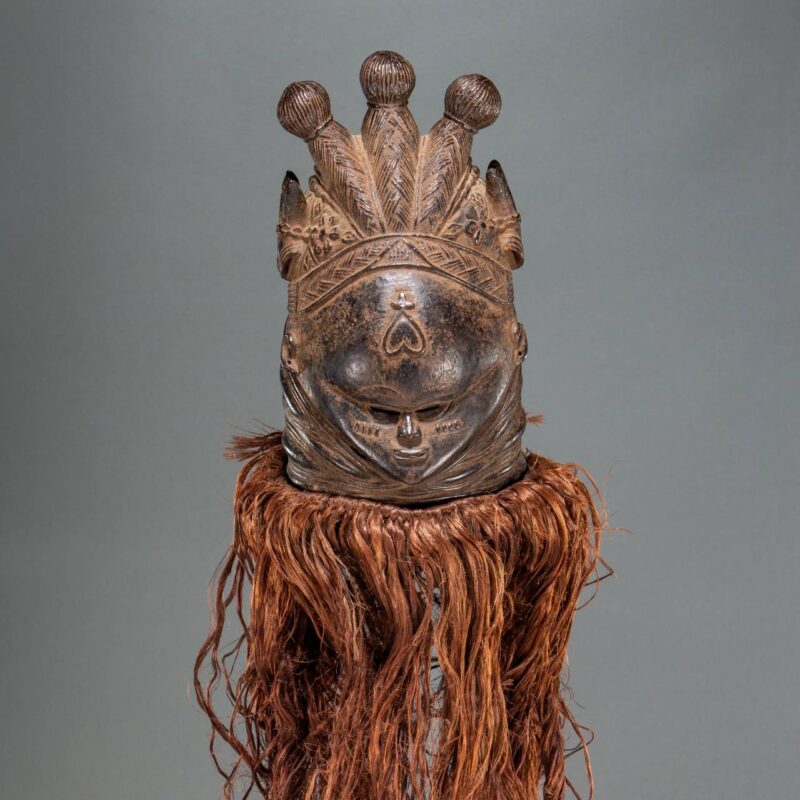Object Title: Sowei Helmet Mask
Materials: Wood, pigment, raffia
Country: Sierra Leone
Cultural: Mende
Date Created: 20th Century


Object Title: Sowei Helmet Mask
Materials: Wood, pigment, raffia
Country: Sierra Leone
Cultural: Mende
Date Created: 20th Century
Sowei masks of Sierra Leone and Liberia (often referred to as Bundu masks) are produced for the Sande Society, a women’s initiatory organization. Masks of this type, related either directly to Sande or to various variations of it, are distributed across a wide region from Central Liberia as far East as the Bassa people of Grand Bassam county to Central Sierra Leone.
The Sande initiatory society oversees the transition to womanhood and the teaching of proper feminine cultural mores. There are also connections between the Sande society and the Yassi divinatory society with the female elders of both organizations often being powerful members or organizers of both groups.
Though carved by men, Sowei masks of the Sande society are commissioned by high-ranking women who will wear and dance with them in public at various times throughout the initiations of the girls, and during the initiatory cycle in sacred dances as well. As such these masks fall into a very small category of masks that are danced by women.
Highly uniform in some senses, Sowei masks also display a dizzying variety of iconographic attributes in rendering the coiffure and related decoration, which are referential to Sande sacred knowledge relating to narratives of the River and Water spirits as well as to aspects of feminine beauty, prestige, and esoteric knowledge.
This fine old example is augmented by the addition of a rising three-part coiffure balanced atop the head. The elaborate coif also features carved cowrie shells which were a traditional form of currency as well as carved imitations of small goat horns – real goat horns being receptacles for magical empowering materials.
In its original context, this mask would have been attached to a large fiber costume completely covered with dark fiber that would dance whirl in a virtuoso dance. The non-sacred dance of the mask would occur upon the release of the girls from the bush school, much like Poro masks among boys’ initiations in Liberia and surrounding areas.
The darkened surface would have been polished to shine and then oiled – often stove-black was used to make the masks deep black in color. The shiny surfaces referred to the oiled skins of young women, a sign of beauty and youth, and to the reflection of the sun off of the water of the river.
Exhibition History:
In Memoriam – Bonnie Terrill Ross (1956-2022). New York: QCC Art Gallery of CUNY, October 12, 2023, to February 16, 2024.